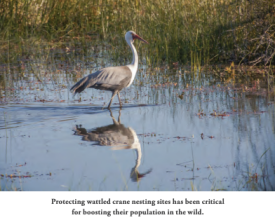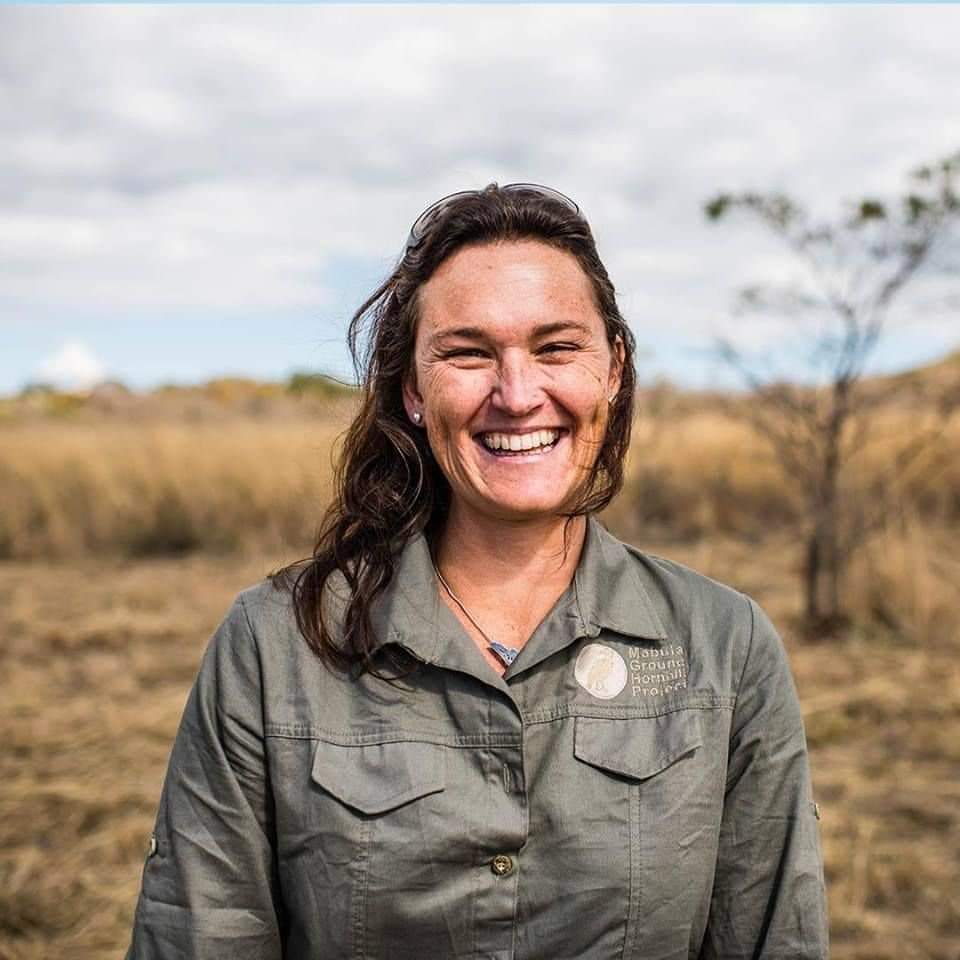
Piezas móviles: Unir las piezas para conservar las grullas carunculadas

Las poblaciones de grullacarunculada (Grus carunculate) empezaron a sufrir en la década de 1980, cuando la agricultura, la industrialización y el pastoreo excesivo de animales domésticos redujeron considerablemente el hábitat de humedales de las grullas. A pesar de los grandes esfuerzos de conservación realizados por asociaciones locales, la población sudafricana de la especie, antaño muy extendida, se redujo a poco más de 200 aves en el año 2000.
El Grupo de Especialistas en Planificación de la Conservación (CPSG) fue invitado en 2001 a dirigir una serie de talleres y ayudar a definir una futura dirección para la especie. Los participantes convinieron en que la mejor manera de dar a las grullas carunculadas la mejor oportunidad de sobrevivir era asegurarse de que no se perdiera ninguno de sus lugares de cría, sensibilizar a la opinión pública sobre la difícil situación de las grullas y estudiar aspectos poco conocidos de la biología de las grullas, recopilando lo aprendido en un lugar al que todos pudieran acceder. Y aclararon la finalidad de la población cautiva -proporcionar una fuente de aves fuertes y sanas para la reintroducción-, que guió sus actividades a corto y largo plazo.
Impactos
La CPSG ayudó a las partes interesadas a combinar y organizar sus datos y a establecer un entendimiento común de la situación de la especie. Así pudieron evaluar opciones conjuntamente, tomar decisiones en común y mantener el impulso.
En el momento del taller, la población cautiva sólo contaba con 9 ejemplares, pero con el nuevo plan ha crecido hasta 44 ejemplares. "Los modelos creados por el CPSG han sido la base de todas las decisiones que hemos tomado para desarrollar lo que se ha convertido en una población cautiva muy fuerte", dijo Kerryn Morrison, de la asociación International Crane Foundation / Endangered Wildlife Trust. El número de grullas carunculadas silvestres en Sudáfrica ha aumentado más de un 60% desde el taller, hasta llegar a unas 320. "Las grullas carunculadas han experimentado un giro completo", dijo Morrison. "Tanto que pronto ya no tendremos que plantearnos complementar la población salvaje con aves criadas en cautividad". El trabajo dista mucho de haber terminado, pero hemos avanzado mucho, y el plan que formamos con la orientación de la CPSG nos proporcionó una base sólida."



